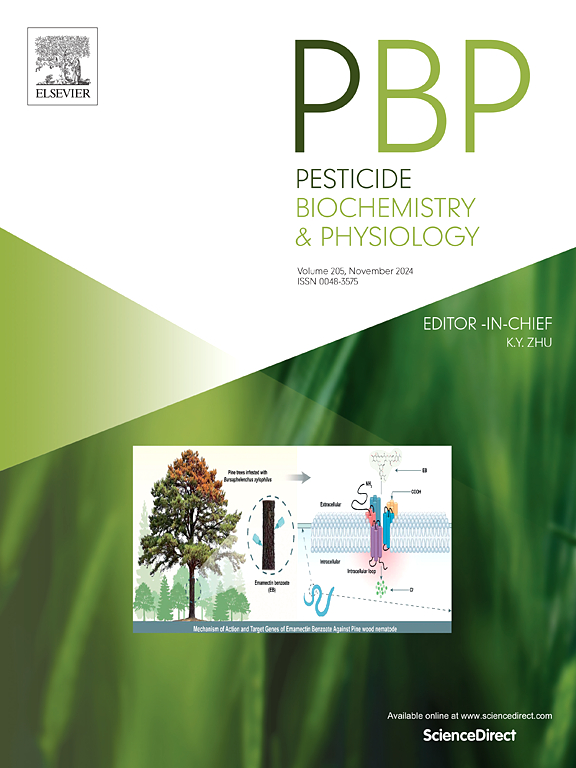Regulation of chitin synthesis by the juvenile hormone analogue fenoxycarb in Hyphantria cunea
IF 4.2
1区 农林科学
Q2 BIOCHEMISTRY & MOLECULAR BIOLOGY
引用次数: 0
Abstract
Fenoxycarb, a non-terpenoid carbamate with stomach and contact toxicity, is a promising insecticide affecting insect growth and development. However, fenoxycarb how to regulate insect digestion and absorption and chitin synthesis remains largely unclear. Here, we investigated the effects of fenoxycarb on growth, chitin synthesis, carbohydrate homeostasis, and digestive capabilities in Hyphantria cunea, a widespread agricultural and forestry pest, to clarify the action mechanism of fenoxycarb from the perspective of digestive function and carbohydrate metabolism, and confirmed that fenoxycarb significantly decreased chitin content, increased chitinase activity, and regulated the expression of genes related to chitin synthesis and degradation. Further studies showed that fenoxycarb significantly reduced glycogen content and increased glucose and trehalose contents, increased trehalase activity, and down-regulated trehalase synthesis and degradation related genes in the larvae, indicating abnormal metabolism of chitin synthesis substrates. Moreover, from the perspective of midgut digestive function, fenoxycarb significantly affected the activities of digestive enzymes in the midgut of the larvae, indicating that the larvae had digestive and absorption disorders. The findings provide a novel insight into the molecular mechanism by which fenoxycarb abnormally promotes digestive enzyme activity in the midgut and eventually interferes with insect chitin synthesis.

求助全文
约1分钟内获得全文
求助全文
来源期刊
CiteScore
7.00
自引率
8.50%
发文量
238
审稿时长
4.2 months
期刊介绍:
Pesticide Biochemistry and Physiology publishes original scientific articles pertaining to the mode of action of plant protection agents such as insecticides, fungicides, herbicides, and similar compounds, including nonlethal pest control agents, biosynthesis of pheromones, hormones, and plant resistance agents. Manuscripts may include a biochemical, physiological, or molecular study for an understanding of comparative toxicology or selective toxicity of both target and nontarget organisms. Particular interest will be given to studies on the molecular biology of pest control, toxicology, and pesticide resistance.
Research Areas Emphasized Include the Biochemistry and Physiology of:
• Comparative toxicity
• Mode of action
• Pathophysiology
• Plant growth regulators
• Resistance
• Other effects of pesticides on both parasites and hosts.

 求助内容:
求助内容: 应助结果提醒方式:
应助结果提醒方式:


